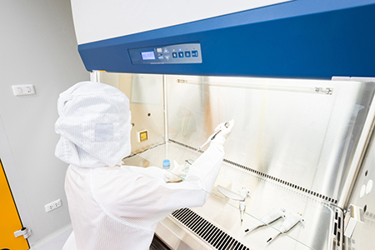Enhanced Non-Viral Gene Delivery To Stem Cells With jetMESSENGER® mRNA Transfection Reagent

Growing interest in stem cells as a unique cellular system is driven by their self-renewal capacity, immune suppressive properties as well as their differentiation potential into various cell types. Hence, developing an efficient gene transfer method to modulate gene expression has become indispensable to further understand the molecular function of single genes in stem cells, such as mesenchymal stem cells (hMSC).
As an alternative to viral-based transfection methods which give rise to potential pathogenicity and immune response risks, we have developed an efficient non-viral mRNA transfection reagent jetMESSENGER® that leads to outstanding transfection efficiencies in both embryonic and adult stem cells. Here, we demonstrate that with jetMESSENGER® mRNA transfection reagent manufactured at Polyplus-transfection®, transfection efficiencies obtained in hMSC and mES cells were respectively superior to 90% and to 50%. Remarkably, in comparison to main competitor DNA transfection reagents, jetMESSENGER® mRNA transfection reagent led to a 50-fold increase in hMSC and to a 10-fold increase in the number of positively EGFP expressing mES cells.
Get unlimited access to:
Enter your credentials below to log in. Not yet a member of Cell & Gene? Subscribe today.
